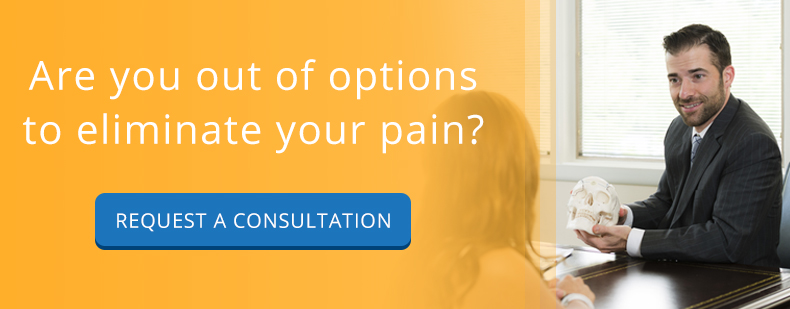Hemifacial spasm is typically caused by a blood vessel at the base of your skull pressing against the facial nerve as it leaves your brainstem. This compression of the nerve can cause symptoms including involuntary twitching or “tics” on one side of the face. As the condition progresses, the twitching and pulling can become more and more pronounced, causing both physical and emotional discomfort. After a hemifacial spasm diagnosis, evaluating the available treatment options in NJ can help you to determine what the right next step is right for you.
Working with your surgeon
Finding the right solution is as simple as exploring the various hemifacial spasm treatment options NJ has available and allowing your surgeon to guide you to the one best suited to you. It’s important that you feel you can have candid discussions with your surgeon. Letting your doctor know about any concerns or reservations will allow them to work through the issues with you. It’s important to keep in mind that they will only recommend what is best for you.
Hemifacial spasm treatment options
Once you have your diagnosis, make an appointment with your surgeon to explore your hemifacial spasm treatment options in NJ. After a thorough assessment of not only your condition but also your lifestyle and goals for symptom relief, he or she will be able to advise you on the best treatments to suit your needs.
Medications
Treatment for hemifacial spasm used to almost exclusively consist of medications such as the sedative diazepam to help control the involuntary tics and twitches caused by this condition. The main drawback to medications of these nature is that they don’t work adequately and are can also be highly addictive. Medication is now very infrequently used in hemifacial spasm treatment.
Anticonvulsants, although not addictive, have shown no improvement to minimal improvement in addressing hemifacial spasm symptoms.
Injections
Botox (botulinum toxin) injections are used medically for conditions such as hemifacial spasm. While they may work for a short period of time, the affected areas have to be reinjected on a regular basis to try and maintain results. Many individuals with hemifacial spasm also find that the level of relief isn’t adequate enough to resolve symptoms.
This non-surgical approach has no marked recovery times associated, making it appealing to those that don’t want to deal with surgical recovery. Nonetheless, the frequency with which the injections must be given, in addition to the less effective symptom relief makes it a secondary choice for many hemifacial spasm patients.
Microvascular decompression
Microvascular decompression (MVD) is the most effective of the hemifacial spasm treatment options in NJ. While less invasive, MVD is still a general anesthetic procedure so can only be performed on those cleared for general anesthesia.
MVD is performed by your surgeon creating a small incision behind your ear. A portion of bone around the size of a quarter is removed from the base of the skull to give your surgeon access to the nerves and blood vessels.
Using a microscope and other, finely calibrated instruments, the nerve that is being compressed by the vein or artery is located. At this point, your surgeon will carefully lift the blood vessel away from the nerve. A small sponge of Teflon is placed between the two. This effectively insulates the nerve from the pulsing of blood through the blood vessel, dampening the concussive movements that were causing the nerve to misfire.
Once finished a synthetic material will be placed in the opening in your skull; your own bone will eventually grow over this to close up the area the bone was removed from.
Hemifacial Spasm Surgery Recovery Overview
Recovery starts in the hospital. When your surgeon is finished with your procedure you’ll be taken to the recovery area. Here you’ll be observed until you wake up. Your vitals will be checked and any pain medication you may require will be administered intravenously and adjusted to give you the maximum level of relief.
Once you’re awake enough and your vital signs are stable, you will be asked to participate in a few exercises to determine nerve function. You may notice an improvement in your facial spasm right away. If the nerve was severely compressed, it may take some time for the symptoms to subside.
From recovery, you will be moved to ICU. This is precautionary, as most patients that undergo surgeries that involve entering the skull are observed in this hospital unit for the first leg of their stay. A stay in the ICU can range from about 12 hours to 32 hours, depending on your doctor’s assessments of your recovery.
The remainder of your stay will take place in a regular hospital room. You’ll be transitioned from intravenous pain medications to oral medications. You’ll also be asked to get up and walk regularly. This not only helps keep your blood circulating but allows your health care team to assess your progress. You can expect to go home anywhere from about 2 – 3 days after surgery.
Once home, you’ll need to follow your doctor’s instructions exactly. It’s important that you take your pain medication as prescribed to maintain a greater level of comfort and aid in the healing process. By the second week, you’ll start feeling more like yourself. You’ll have more energy and will be able to do simple tasks without becoming exhausted. It’s important that you heed your doctor’s recommendations, though, and only do that which he or she has approved.
During your recovery, your energy level will be lower than usual; this is perfectly normal. Here are a few tips for getting through recovery at home:
- Be sure to get plenty of rest and don’t overdo it. For instance, the amount of weight you will be able to lift will be restricted.
- Taking a few gentle walks throughout the day will help deliver fresh oxygen to the surgical site and keep your muscles from atrophying.
- It’s important to eat a balanced diet. If you are unsure what the best food choices would be during recovery, ask your doctor to provide you with a list of nourishing foods.
- Having help is key to your recovery success. Someone that can drive, perform household chores and cook will give you the chance to focus on resting and recovering. If you have small children, it’s also helpful to have childcare in place.
- It’s vital that you attend your follow-up appointments. These will allow your doctor to follow your progress and address any concerns you may have.
Hemifacial Spasm Treatment in NJ
Through the help of your qualified facial surgeon, you can explore your hemifacial spasm treatment options in NJ. Choosing the right treatment doesn’t have to all fall on you; rely on your doctor to guide you in making the right choice.


